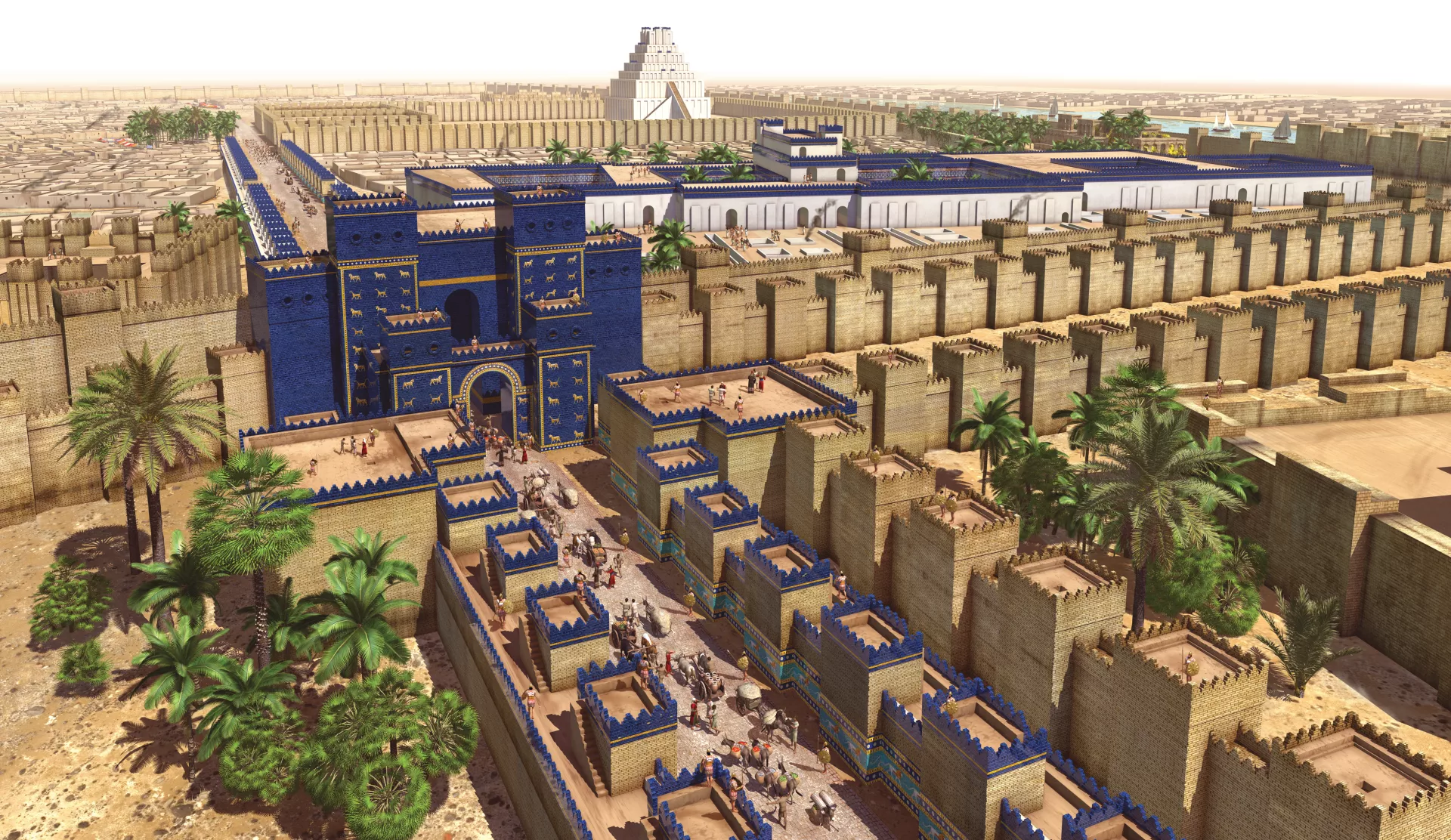
Hey there, history enthusiast! Get ready to embark on a fascinating journey through time as we delve into the rich tapestry of the Babylonian Empire’s timeline.
This ancient civilization, located in the cradle of Mesopotamia, boasts a story filled with conquests, dynasties, and cultural contributions that have left an indelible mark on human history.
So, grab a seat in our virtual time machine, and let’s explore the captivating epochs of the Babylonian Empire together!
Early Babylonian Period (c. 1894 BCE – 1595 BCE)
Let’s step back to the early 19th century BCE, where our journey begins with the first Babylonian dynasty.
It was an era of remarkable rulers like Hammurabi, famous for the Hammurabi Code.
This code was groundbreaking, setting the stage for future legal systems worldwide.
Hammurabi addressed a wide range of topics, from commerce to family matters, and inscribed these laws on a massive stone monument for all to see, ensuring transparency.
What’s truly fascinating is how these principles have endured over time, influencing countless legal systems and philosophies. It’s a testament to the lasting impact of innovative ideas on our world.
- Read also: A Glimpse into the Sumerian Civilization Timeline
- Read also: A Journey Through the Persian Empire Timeline
Kassite Dynasty (c. 1595 BCE – 1155 BCE)
Jumping ahead a bit to the Kassite Dynasty, which ruled Babylon from around 1595 BCE for nearly 450 years. That’s quite a lengthy reign!
During this time, Babylon saw an interesting mix of Kassite culture blending in with its own.
Imagine two distinct cultures meeting, merging, and influencing each other—it must have been quite the scene.
Despite these changes, Babylon remained a bustling hub for trade and culture, like a constant burst of activity and ideas.
The Kassite Dynasty’s legacy reminds us of the rich tapestry of history where cultures and ideas intermingle, always sparking curiosity.
Middle Babylonian Period (c. 1155 BCE – 911 BCE)
Now, let’s dive into the Middle Babylonian Period, spanning from about 1155 BCE to 911 BCE.
During this time, Babylon faced challenges, notably from its neighbor, the powerful Assyrian empire.
But here’s the intriguing part: Babylon didn’t just survive; it thrived.
It remained a cultural and economic hub, showcasing its resilience and lasting impact.
It’s like a tale of a city that refused to be overshadowed, where cultures continued to flourish, and trade never ceased.
This period reminds us that great civilizations can endure even in the face of adversity, leaving us with a legacy that continues to pique our curiosity.
Neo-Assyrian and Neo-Babylonian Empires (c. 911 BCE – 539 BCE)
Let’s fast-forward to a significant chunk of Babylonian history, roughly from 911 BCE to 539 BCE.
During this time, two powerful empires took the stage: the Neo-Assyrian Empire and the Neo-Babylonian Empire.
The Neo-Assyrian Empire was the first to shine, expanding its territory and influence across the ancient world.
It was like witnessing the rise of a dominant force on the global stage.
But then, Nebuchadnezzar II came into the picture, leading the Neo-Babylonian Empire.
Under his rule, Babylon experienced a revival. The city transformed with impressive architecture, including the famed Hanging Gardens of Babylon, one of the Seven Wonders of the Ancient World.
The shift from one empire to the other is indeed intriguing. One rises, and the other takes its place, each leaving a unique mark on history.
It’s like a historical seesaw of power and innovation, a dynamic story of ambition and change.
Persian Conquest and End of the Babylonian Empire (c. 539 BCE)
Every empire must eventually confront its own twilight.
So, in the year 539 BCE, fate had it that the Babylonian Empire would yield to the Persians, led by none other than the illustrious Cyrus the Great.
Now, picture this grand moment in history, when the torch was passed from one empire to another.
Babylon, once a formidable power, found itself under the Persian banner. It’s a bit perplexing to think about, isn’t it?
The rise and fall of empires, each leaving its mark on the pages of history.
Legacy of the Babylonian Empire
The Babylonian Empire left an astonishing legacy.
They were pioneers in math and astronomy, giving us the 360-degree circle and our time divisions into 60 minutes and 60 seconds.
And don’t forget the “Epic of Gilgamesh,” one of the earliest literary works that shaped epic storytelling as we know it.
It’s astounding how a civilization from so long ago still influences our world today, like a timeless beacon guiding our journey through history.
- Read also: An In-depth Look at Iran’s History Timeline
- Read also: The Fascinating History of Europe in a Timeline
Conclusion
As we wrap up our journey through the Babylonian Empire’s timeline, it’s truly awe-inspiring to reflect on the impact this civilization had on human history.
From the Hammurabi Code, which laid the foundation for justice systems worldwide, to the mythical Hanging Gardens, their contributions are nothing short of remarkable.
The legacy they’ve left behind is a testament to the enduring influence of an empire that once held sway over the cradle of civilization.
FAQs
The Babylonian Empire made significant contributions to mathematics, astronomy, and literature. Their Hammurabi Code is famous for its influence on legal systems, and they developed the concept of a 360-degree circle.
Yes, there were several other dynasties and periods of rule in Babylon, including the Old Babylonian period and the Neo-Assyrian period.
After the Persian conquest in 539 BCE, Babylon continued to exist as an important city, but it no longer held the status of an independent empire. Its cultural and historical significance endured.



